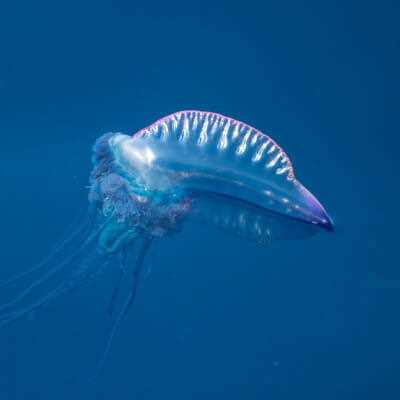Jellyfish are sea invertebrate creatures whose beauty and grace are best viewed from a distance.
Jellyfish season in Thailand
These marine animals can be seen at any time of the year, but their activities are seasonal. Thai jellyfish are much more unpleasant neighbors than those that can be found, for example, in the Black Sea. As a rule, contact with them ends with a burn or other unpleasant feelings.
But the Thai species of jellyfish are just children compared to those that sometimes swim into Thai waters off the coast of Australia. Before the Sea Wasps (Chironex fleckeri)and Portuguese Ships (Physalia physalis) Jellyfish bites in Thailand never killed bathers. Despite continuous monitoring of the waters by biologists, caution and vigilance should be the rule of thumb for anyone vacationing in Thailand.
Thai Jellyfish Danger Warning
What are they, dangerous jellyfish?
The Sea Wasp jellyfish is the most dangerous creature. Not only do its sting cells contain poison that can kill in four minutes, but it is also semi-transparent and therefore almost invisible in the water column. The main danger comes not from the dome, the diameter of which reaches the size of a basketball, but from tentacles up to three meters long.
The larger the Sea Wasp, the more dangerous it is. Small specimens cause burns that leave scars, large ones cause cardiac arrest and lung paralysis. If a jellyfish of this type is spotted in the water, the beach is closed. From the action of its poison the only salvation is an antidote, which must be administered as soon as possible.
The Sea Wasp Medusa (Chironex fleckeri)
Portugal Ship Medusa (Physalia physalis)
The Portuguese Ship jellyfish is less poisonous. Its dome is bright blue in color about thirty cm in diameter. It usually lives in the upper layers of water and is highly visible. Contact with its long tentacles causes anaphylactic shock and pulmonary edema.
How to avoid contact with jellyfish
To avoid contact with jellyfish, there are a number of simple rules to follow:
- never bathe in the rain or during a storm;
- don’t go into troubled waters
- don’t ignore warning signs and placards
- be careful in the water;
- stay away from sighted jellyfish;
- If you come into contact with something slippery and unpleasant, do not panic, do not waving your legs and hands, try to swim away quietly;
- know that the jellyfish thrown on the shore is no less dangerous than in the water.
What to do if you are stung by a jellyfish
- If you feel the burn, try not to panic. Waving your arms and legs can lead to the fact that instead of touching one tentacle you get tangled in all at once. The tighter the contact, the greater the dose of poison you will receive, and this can lead to fainting right in the water.
- Feeling the burn, immediately go ashore, because the symptoms of poisoning do not develop immediately. On the shore take steps to remove the remains of the tentacles. Use a chopstick or tweezers to do this, but under no circumstances touch the affected area with your bare hand!
- Rinse the burn area with vinegar or lemon juice. Poisonous jellyfish in Thailand use a toxin which intensifies its effect when in contact with ammonia, so trying to wash the affected area with urine will only make things worse. Fresh water, carbonated drinks destroy the membrane of the sting cells, leading to additional poisoning, so they are also unacceptable for washing.
- Do not scratch or bandage the affected area. Prepare for indirect heart massage and CPR.
All of the above are first aid measures. It must be given correctly before a doctor arrives at the scene and administers an anti-toxic shot.
The dangers of jellyfish are well known in Thailand. Therefore, on equipped beaches necessarily have a medical aid station. All medical manipulations are carried out on the spot for free. In hotels, on beaches and even in stores they distribute free information posters, so tourists are aware of the degree of danger and know how to act in an emergency situation.
Read More:- Thailand's main dangers for vacationers.
- Harmful insects in Thailand – from the edible to the most dangerous!.
- Snake Varieties in Thailand and First Aid for a Snake Bite.
- Are there sharks in Thailand and how can you avoid being attacked by them?.
- The 2004 Thailand tsunami – should we be afraid of it now?.
- What to do if you step on sea urchin needles – tips.




